
https://physics.stackexchange.com/questions/113290/simulate-plot-electrostatic-field
Windows: DEMO_XY.exe 25 Linux: ./DEMO_XY.run 25
Each pixel of picture represents one mesh node.
white colour - vacuum red colour - electrode 1 green colour - electrode 2 (ellipse)

mesh size:
number of rows == 401
number of columns == 401
x_start == -200.0 [mm]
x_stop == +200.0 [mm]
y_start == -200.0 [mm]
y_stop == +200.0 [mm]
number of iterations
>>> SUCCESS - solution V(x,y) has been found
after 337158 iterations
electrode 1 (red A+B)
(A)
boundary == +1
voltage == +9.0 [V]
i_col == 181 .. 200
i_row == 101 .. 200
(B)
boundary == +1
voltage == +9.0 [V]
i_col == 101 .. 200
i_row == 200 .. 220
electrode 2 (ellipse, green)
boundary == +2
voltage == +0.0 [V]
x_center_1 == +50.0 [mm]
y_center_1 == +20.0 [mm]
x_center_2 == +120.0 [mm]
y_center_2 == +60.0 [mm]
R_total == +90.0 [mm]
ellipse equation:
input: point in coordinates(x,y)
parameters of ellipse - 2 focuses
(x_center_1,
y_center_1,
x_center_2
y_center_2)
- the sum of 2 distances to two focal foints (R_total)
process:
R_1 = sqrt((x - x_center_1)*(x - x_center_1) + (y - y_center_1)*(y - y_center_1))
R_2 = sqrt((x - x_center_2)*(x - x_center_2) + (y - y_center_2)*(y - y_center_2))
if(R_1 + R_2 <= R_total)
{
then point on mesh belongs to ellipse
}
computation accuracy:
eps == 1.0E-9 [V]
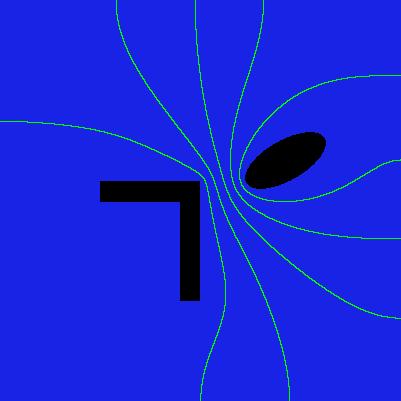

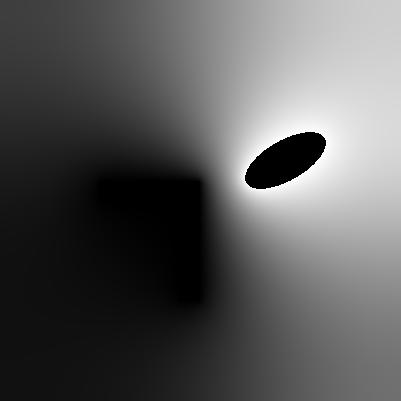
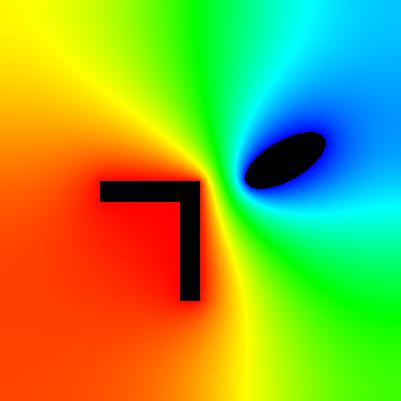
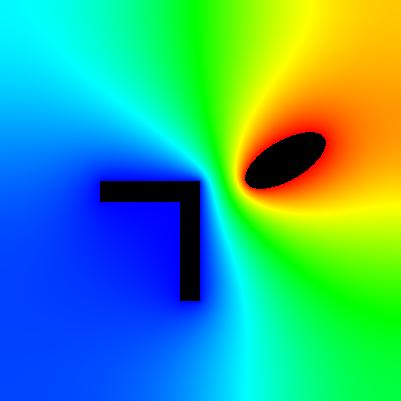
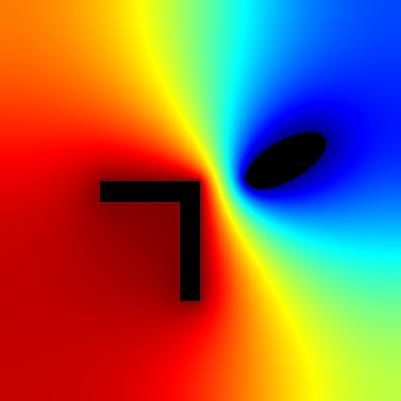
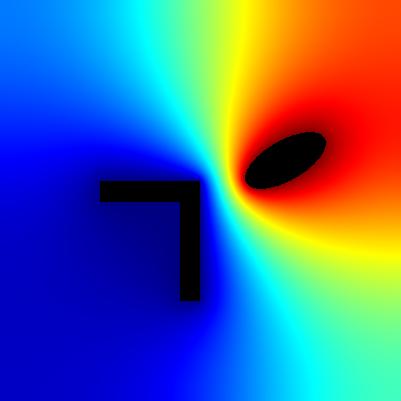
Important: determinig of exact values of E near electrode surface is generally problematic. These maps have generally illustrative character.


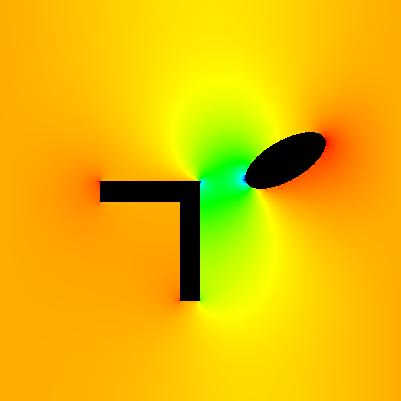
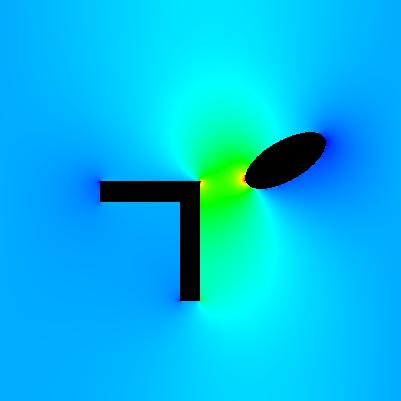
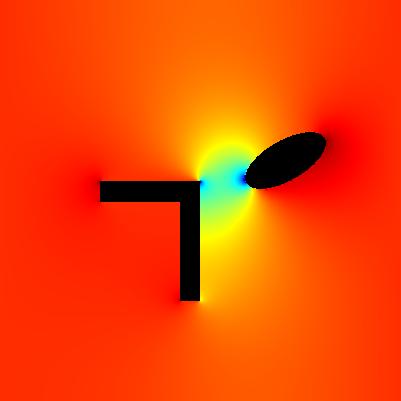
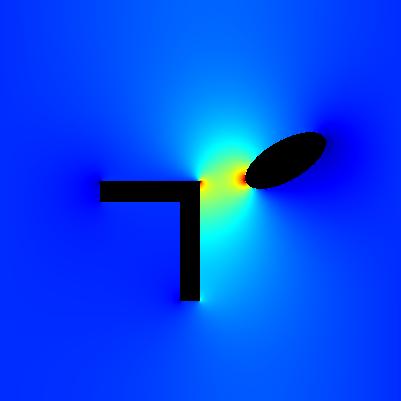
Important: determinig of exact values of E near electrode surface is generally problematic. These maps have generally illustrative character.


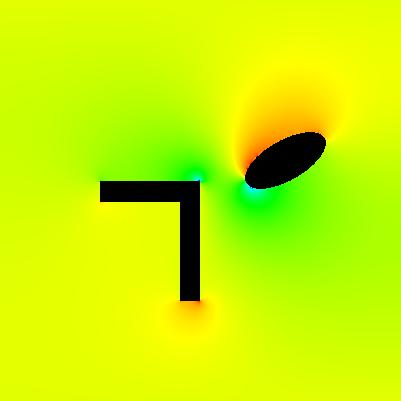
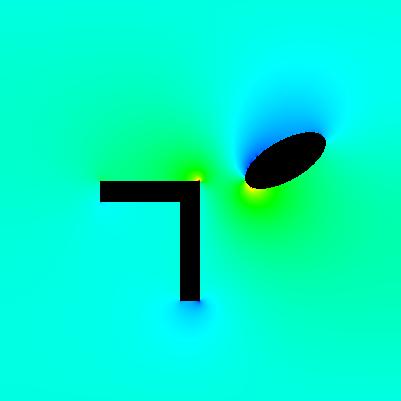
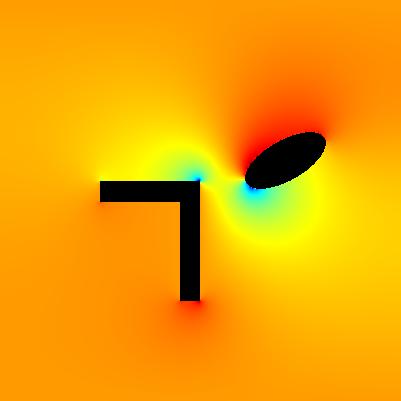
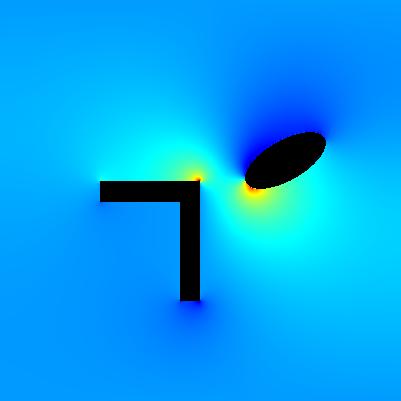
algorihm of computation: E = sqrt(E_x*E_x + E_y*E_y)
Important: determinig of exact values of E near electrode surface is generally problematic. These maps have generally illustrative character.


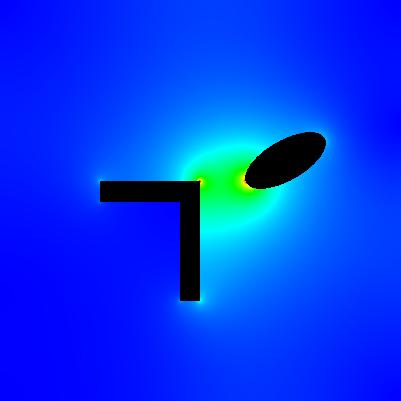
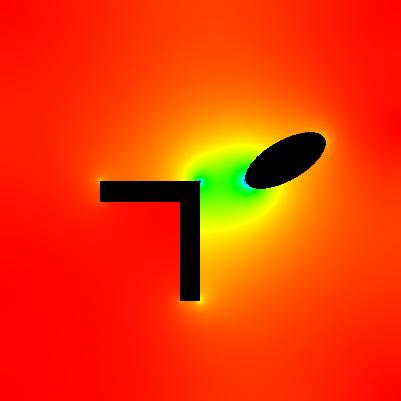
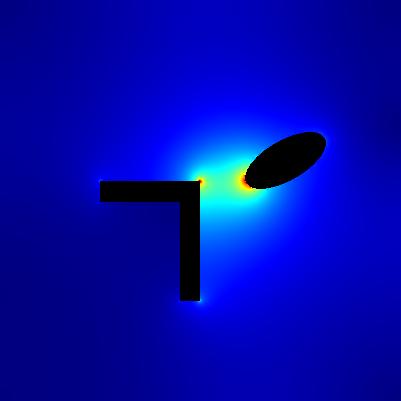
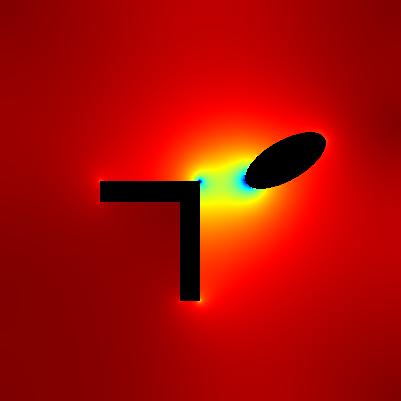
algorithm of computation: E*E = E_x*E_x + E_y*E_y
Important: determinig of exact values of E near electrode surface is generally problematic. These maps have generally illustrative character.
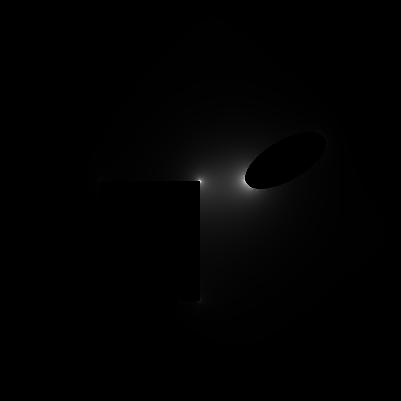


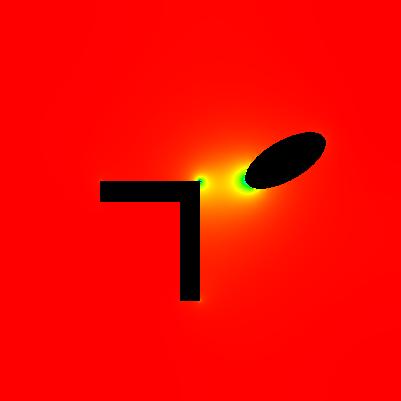
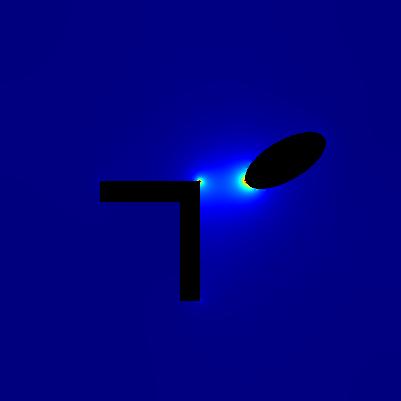
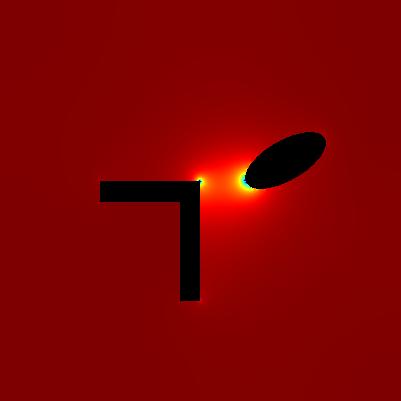
This static site does not use any cookies or gather any data.